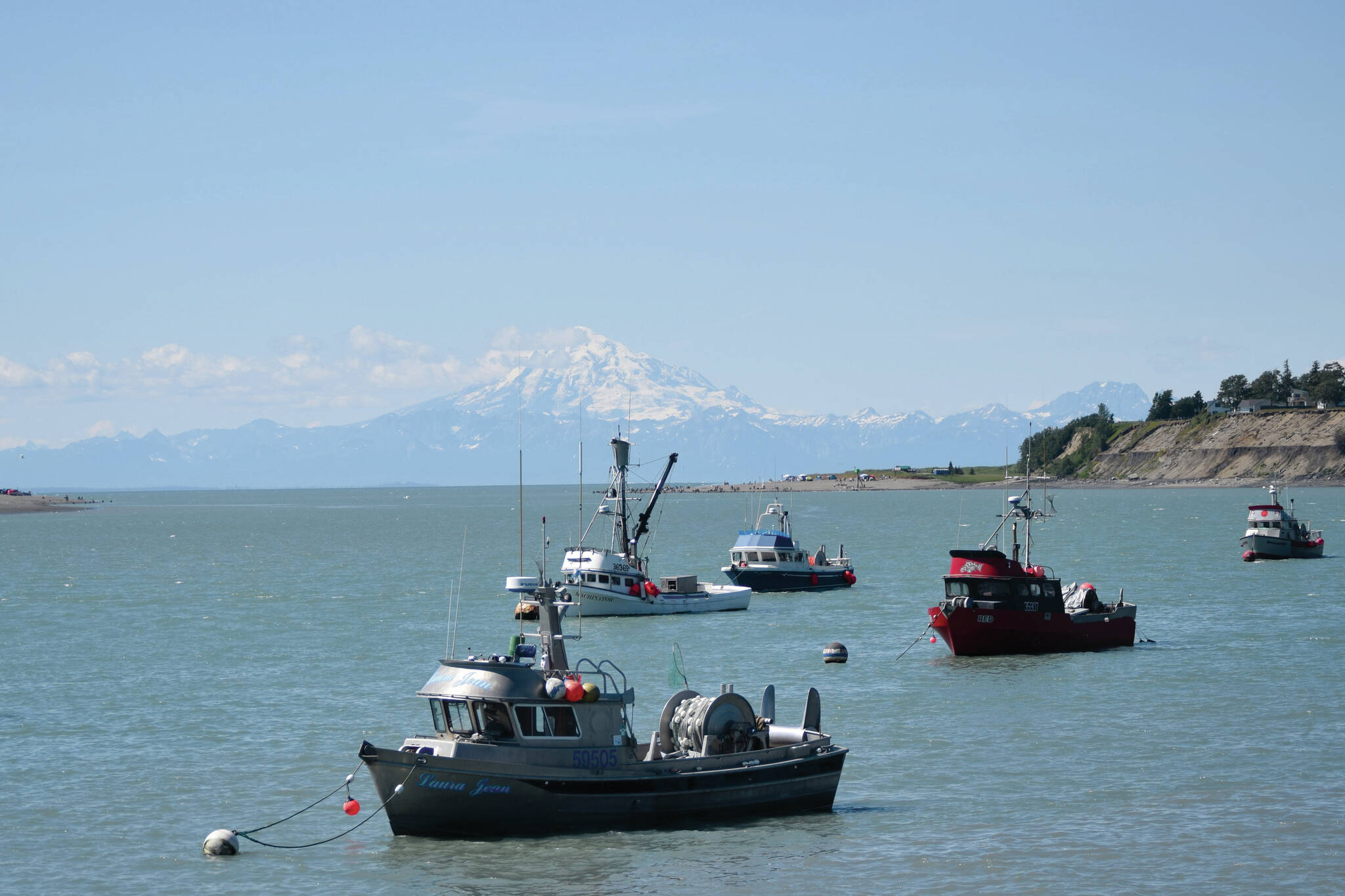The Alaska Board of Fisheries voted down Proposal 283 at its statewide meeting in Anchorage last week — a motion that would have loosened restrictions for set gillnetters in a part of Cook Inlet.
Glenn Haight, the executive director of the fish board, said last Wednesday that the group split between wanting to provide extra opportunities for Cook Inlet set gillnetters, and examining the issue at greater length at the regular meeting.
Proposal 283 was classified as a board-generated proposal, which allows deliberation in an expedited fashion, and was introduced at an October 2021 work session by fish board member McKenzie Mitchell. Cook Inlet issues weren’t originally set to be discussed until the board’s regular meeting in 2024.
As written, Proposal 283 would have amended the Kenai River Late-Run King Salmon Management Plan to allow a 600-foot set gillnet fishery by emergency order once 13,500 large kings had reached escapement. The current escapement parameters are set at 15,000 large kings.
“It’s kind of the two sides of the coin,” Haight said. “There were some members that wanted to provide some opportunity for setnetters ,and I think the dissenting view had a lot to do with just that it was taken up out of cycle.”
He said board members who voted down the proposal thought the issue would be better handled at the regular meeting in two years.
The vote failed at the meeting on March 30, 3-3, with no tie breaker.
The failure of Proposal 283 means that once again this year’s commercial fishing season may be abbreviated.
Last summer, king salmon sport fishing closures on the Kenai and Kasilof rivers, as well as Cook Inlet north of Bluff Point, shut down the east side setnet commercial fishery. The Alaska Department of Fish and Game made the call to shut down the fisheries because of projected data that kings would not reach their escapement goals by the end of last season’s late run.
On top of that, the salmon outlook report from the Alaska Department of Fish and Game is projected to be weaker this summer.
According to the report, a run of around 4.97 million sockeye is projected to return to Upper Cook Inlet, with about 2.97 million available for commercial, sport, personal use and subsistence harvest. For the commercial fishery in particular, the ADF&G estimates there will be around 1.4 million sockeye available — which is 1.3 million fish less than the 20-year average.
For other user groups, Proposal 283’s failure has been heralded as a success.
The Kenai River Sportfishing Association has been a clear opponent of the move. In a statement from early March, the agency said Proposal 283 would have shifted “the burden of conservation by giving some commercial fishing interests new harvest opportunities while king salmon fishing is restricted for other users,” and encouraged community members to urge the fish board to vote no on the proposal.
Haight said the majority of testifiers at the statewide meeting came to voice their opinions on Proposal 283. Of about 120 folks, around 95 of them came to talk about the Cook Inlet setnet issue.
For a summary of events from the statewide Board of Fisheries meeting, which concluded on April 2, visit http://www.adfg.alaska.gov/index.cfm?adfg=fisheriesboard.meetinginfo&date=03-26-2022&meeting=anchorage.
Reach reporter Camille Botello at camille.botello@peninsulaclarion.com.



